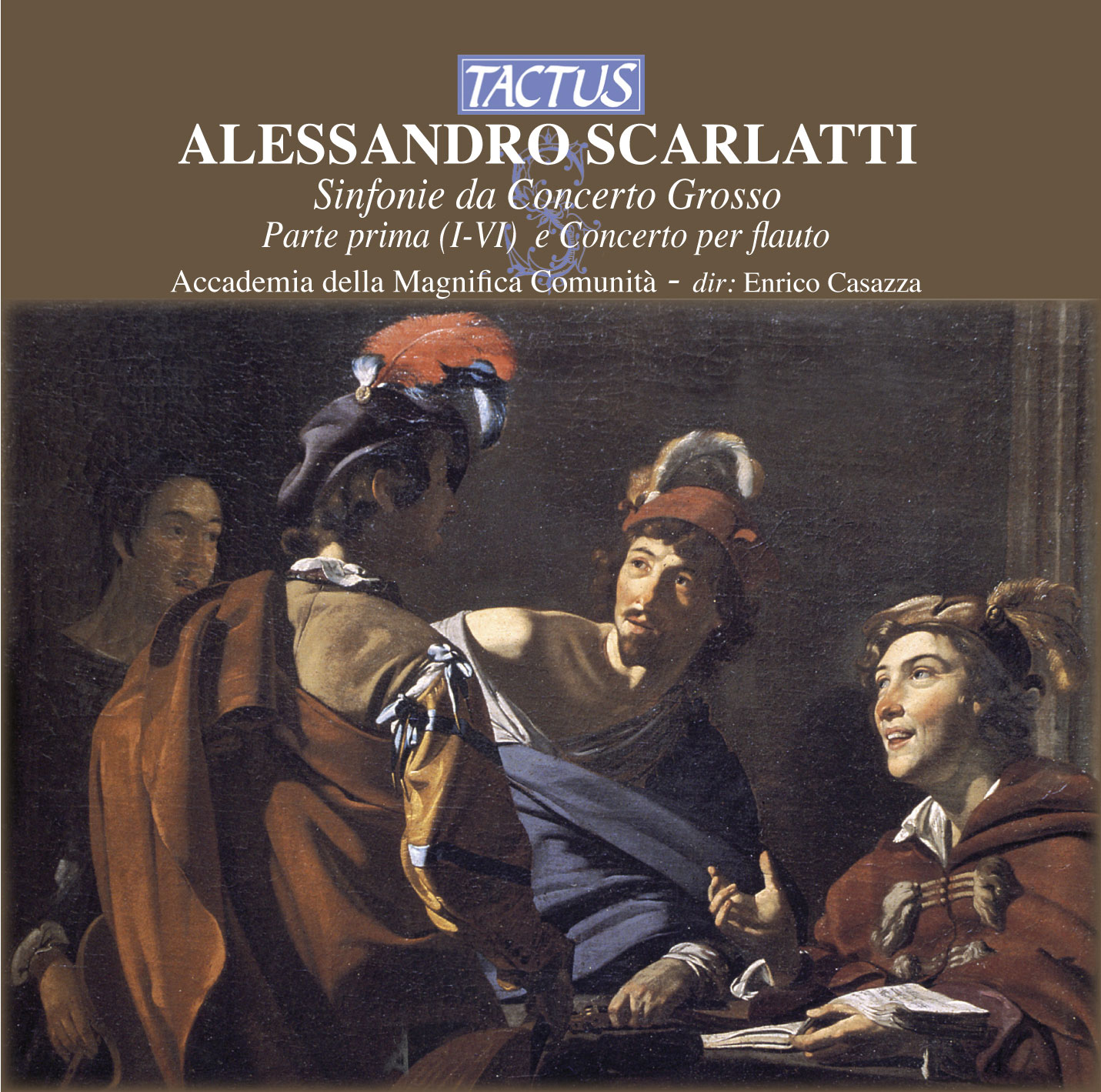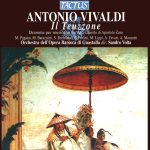SCARLATTI ALESSANDRO
Compared with his vocal compositions of over a hundred melodramas, forty oratorios and more than seven hundred profane cantatas with basso continuo and instrumental obbligato, most of which are still to be rediscovered, the quantity of instrumental music composed by Alessandro Scarlatti would almost seem to be hardly worth mentioning.
Yet, even though this collection does not include the more well-known works the Palermitan composer is posthumously famous for, these compositions are immensely important, in that they allow us to immediately assess the style of Scarlatti, then nearing creative decline, which appears to be suspended between the glorious contrapuntal tradition and beautiful melodies that look decidedly towards the future.
The twelve Sinfonie di Concerto Grosso are of particular significance in this context, according to the autograph in the British Museum in London, and were “cominciate il primo giugno” (started on the first of June) 1715.
It is not clear why the fifty-five year old Scarlatti decided to dedicate himself to a repertory that, up until then, he had practically ignored.
Some say that his interest was stimulated by the necessity to increase his income with an instrumental collection that, when published, would have earned him money and fame, above all in England (this theory would also explain why the manuscript is in London).
Other music scholars saw the extraordinary success of the Concerti Grossi Op. VI by Arcangelo Corelli (a very special edition of which was published after his death in 1714) as the reason for Alessandro Scarlatti’s wanting to “get closer” to the famous composer from Fusignano.
Both hypotheses seem plausible and can also be extended to the almost contemporary IV Concertos in Seven Parts, which had the honour of being printed in 1740 by the London publisher Benjamin Cooke.
The Sinfonie di Concerto Grosso are written for two violins, a viola, a cello and basso continuo, and one or two flutes, or an oboe (which can be replaced by the violin in the Sinfonia IV in E minor) and a trumpet, which has the leading role with the flute, in the Sinfonia II in D major “concertata con li ripieni”.
As regards the flute, the instrument featured most in these works; it is interesting to remember the famous visit that Scarlatti paid to the young Johann Joachim Quantz in 1725.
According to the chronicles of that time, Scarlatti, who was an old man by then, had always had a natural aversion to wind instruments, which he said were unbearably out of tune.
After Johann Adolph Hasse, a friend of Quantz and pupil of the Palermitan composer, had insisted again and again, Scarlatti agreed to receive the future preceptor of Frederik II of Prussia, and write some “soli per flauto” especially for him.
In Sinfonie di Concerto Grosso, written ten years before this memorable meeting, Scarlatti wrote the flute part which is technically linear and not excessively difficult, but full of expression, most evident in the extended melody of the slow movements and which, according to some, would confirm that he did not think much of the technical resources of this instrument.
One of the most significant works in this collection is the Sinfonia II in D major, which opens with a Spiritoso in which the decidedly military sound of the trumpet, accompanied by the flute at thirds and then sixths, creates an exciting atmosphere that soon calms to the melodies of the next Adagio, in which the flute finds a delicate level of introspection.
This sweet contemplative oasis soon makes way for a sparkling and lively Allegro, in which the trumpet and flute highlight their distinctive expressive characteristics.
Another short Adagio announces the grandiose Presto that, with the superb sound of the trumpet, magnificently closes what it perhaps the most outstanding work in the whole collection.
The Sinfonia IV in E minor for flute and oboe is exactly the opposite in character; the excitement of the first movement creates an extraordinarily incisive dramatic atmosphere.
True to the way of alternating the affetti in most works at that time, the tension dissolves into a relaxed and charming cantabile, which sometimes reminds us of Vivaldi, and ends joyously with a lively giga of decidedly popular origin.
Tracklist
Scarlatti, Alessandro
Sinfonia di concerto grosso No. 1 in F Major
1 - I. Allegro (0:52)
2 - II. Adagio (0:53)
3 - III. Allegro (1:34)
4 - IV. Adagio (0:50)
5 - V. Allegro (1:26)
Sinfonia di concerto grosso No. 2 in D Major
6 - I. Spiritoso (0:53)
7 - II. Adagio (1:06)
8 - III. Allegro (1:51)
9 - IV. Adagio (1:31)
10 - V. Presto (1:57)
Sinfonia di concerto grosso No. 3 in D Minor
11 - I. Vivace (0:43)
12 - II. Adagio (1:36)
13 - III. Andante (1:34)
14 - IV. Adagio (1:28)
15 - V. Allegro (1:58)
Sinfonia di concerto grosso No. 4 in E Minor
16 - I. Vivace (0:53)
17 - II. Adagio (1:17)
18 - III. Allegro (1:37)
19 - IV. Adagio (2:08)
20 - V. Allegro (1:53)
Sinfonia di concerto grosso No. 5 in D Minor
21 - I. Spiritoso e staccato (1:00)
22 - II. Adagio (1:38)
23 - III. Allegro (1:52)
24 - IV. Adagio (1:50)
25 - V. Allegro assai (1:25)
Sinfonia di concerto grosso No. 6 in A Minor
26 - I. Vivace (0:44)
27 - II. Adagio (1:46)
28 - III. Allegro (1:42)
29 - IV. Adagio (1:56)
30 - V. Allegro (1:08)
Flute Concerto in A Minor
31 - I. Allegro (1:49)
32 - II. Largo (1:41)
33 - III. Fuga (2:28)
34 - IV. Piano (2:20)
35 - V. Allegro (2:05)
- Composer: SCARLATTI ALESSANDRO
- Performers: Accademia della Magnifica Comunità: Enrico Casazza e Isabella Longo, Violins · Sergio Balestracci e Anna Maria Zanetti, Flutes · Alessandro Lanaro, Viola · Paolo Brunello, Oboe · Diego Cal, Trumpet · Roberto Boarini, Cello · Pietro Perini, Harpsichord · Enrico Casazza, Conductor
- Historical Period: Late Baroque
- Code: TC 661906
- Edition: SEPTEMBER 2007
- Barcode: 8007194103373
- Set: 1
- Total tracks: 35
- Total duration: 00:53:24






